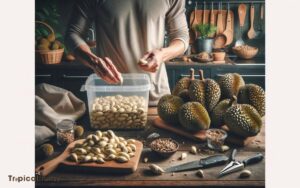How to Make Durian Jam? 6 Easy Steps!
Durian jam, a delectable preserve made from the rich and creamy fruit known for its distinctive aroma, offers a unique culinary experience.
The process of creating durian jam involves careful selection of ripe durians, meticulous preparation, and precise cooking techniques to ensure the perfect balance of flavor and texture.
This guide is intended for those who wish to explore the art of making durian jam at home. We will provide a step-by-step approach to selecting the best fruit, preparing it for cooking, and the specifics of cooking the mixture to achieve a consistent jam.
Additionally, we will discuss the importance of sterilizing storage jars to ensure the longevity of the jam, and offer tips on how to best enjoy your homemade durian preserve.
Whether you are a seasoned jam maker or a curious novice, this guide aims to equip you with the knowledge to produce a high-quality durian jam.
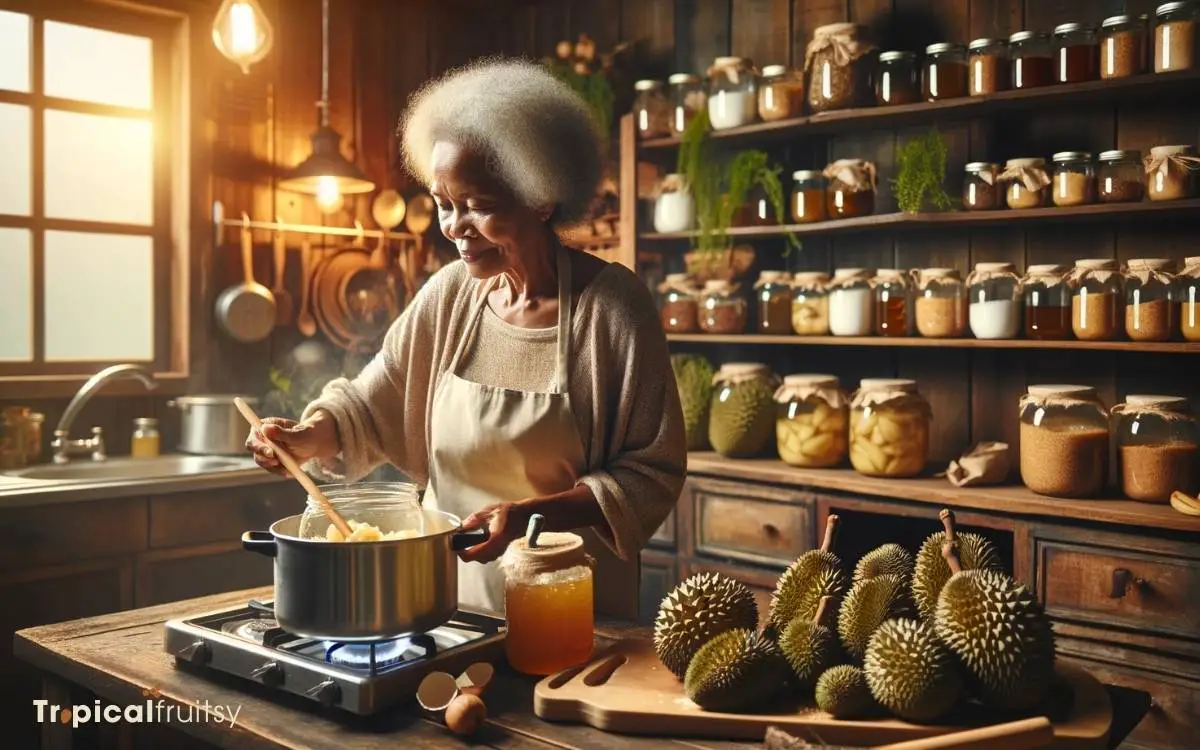
Key Takeaway
Step 1: Selecting the Right Durian
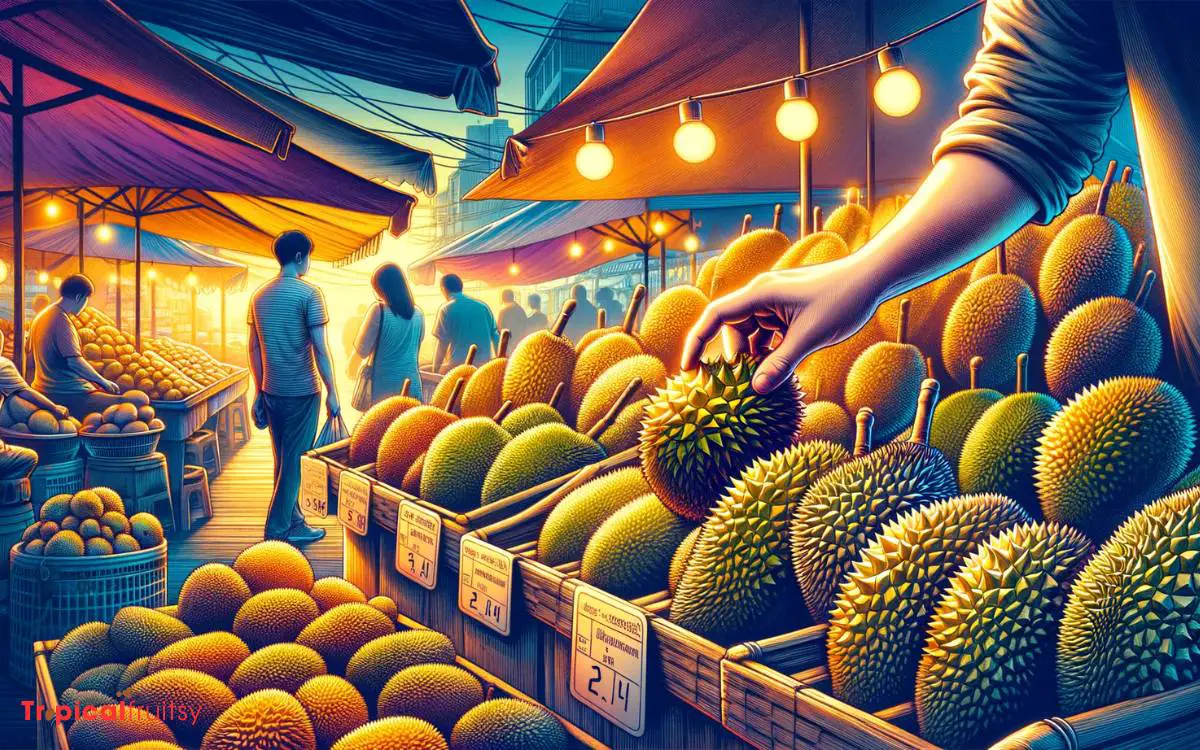
Selecting a ripe durian is often crucial for achieving the optimal flavor profile in your durian jam.
To discern the maturity of the fruit, one must engage in a systematic assessment, beginning with olfactory cues. A ripe durian emits a distinctive, potent aroma that is easily perceivable.
Visually, the exterior should exhibit a slight give upon gentle pressure, indicating the softness of the flesh within. Moreover, the stem of a ripe durian often appears dry and may exhibit cracks.
An innovative approach is to shake the durian gently; a mature fruit will have seeds that rattle slightly, signifying that the flesh has detached from the seeds.
These analytical techniques ensure the selection of a durian that will contribute a rich, complex flavor to the jam.
Step 2: Preparing the Durian
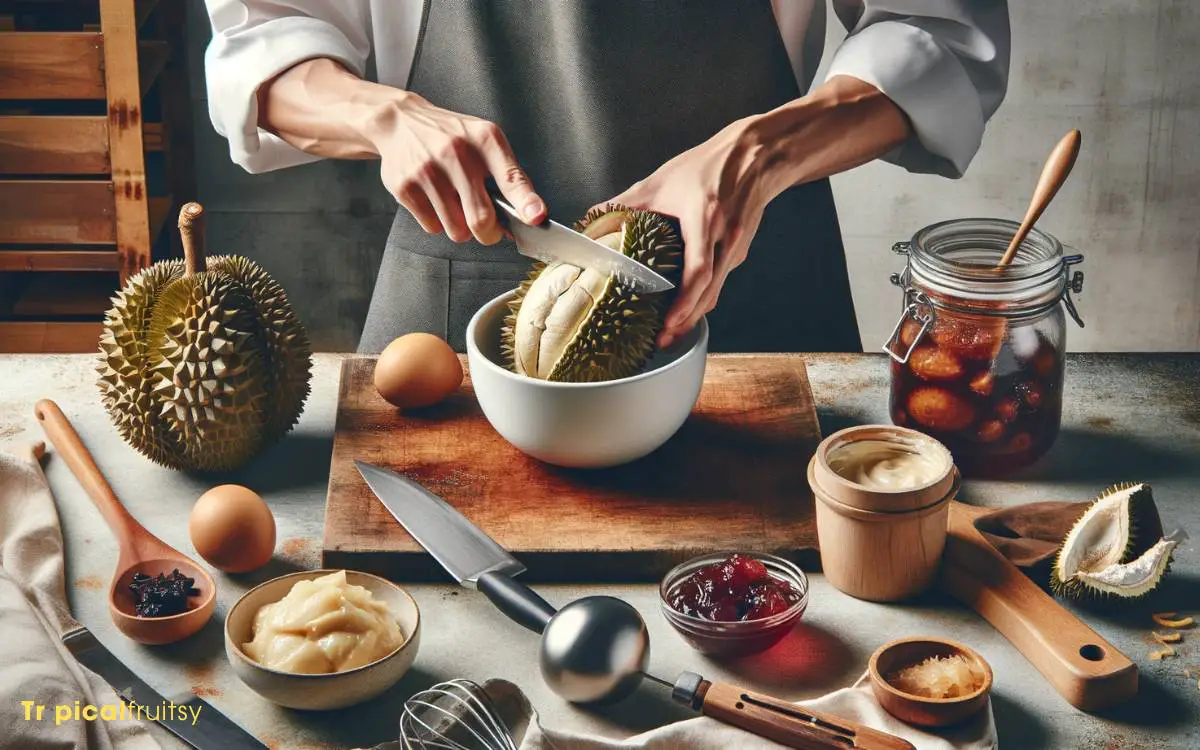
Once one has selected a suitable durian, the preparation process begins with the careful removal of its flesh. This phase is crucial, as the quality of the fruit’s flesh directly impacts the final taste and texture of the jam.
Employing a methodical approach, one must:
- Analyze the durian’s external features to determine the best opening method.
- Seek the seams that run along the fruit’s husk for a natural splitting point.
- Utilize a sharp knife with precision to avoid crushing the delicate flesh within.
Once opened, innovative techniques can be applied to extract the flesh while minimizing waste:
- Gently separate the lobes of flesh from the husk.
- Discard any large seeds and unwanted fibrous parts of the fruit.
This systematic preparation sets the stage for the subsequent transformation of the durian into a delectable jam.
Step 3: Cooking the Jam Mixture
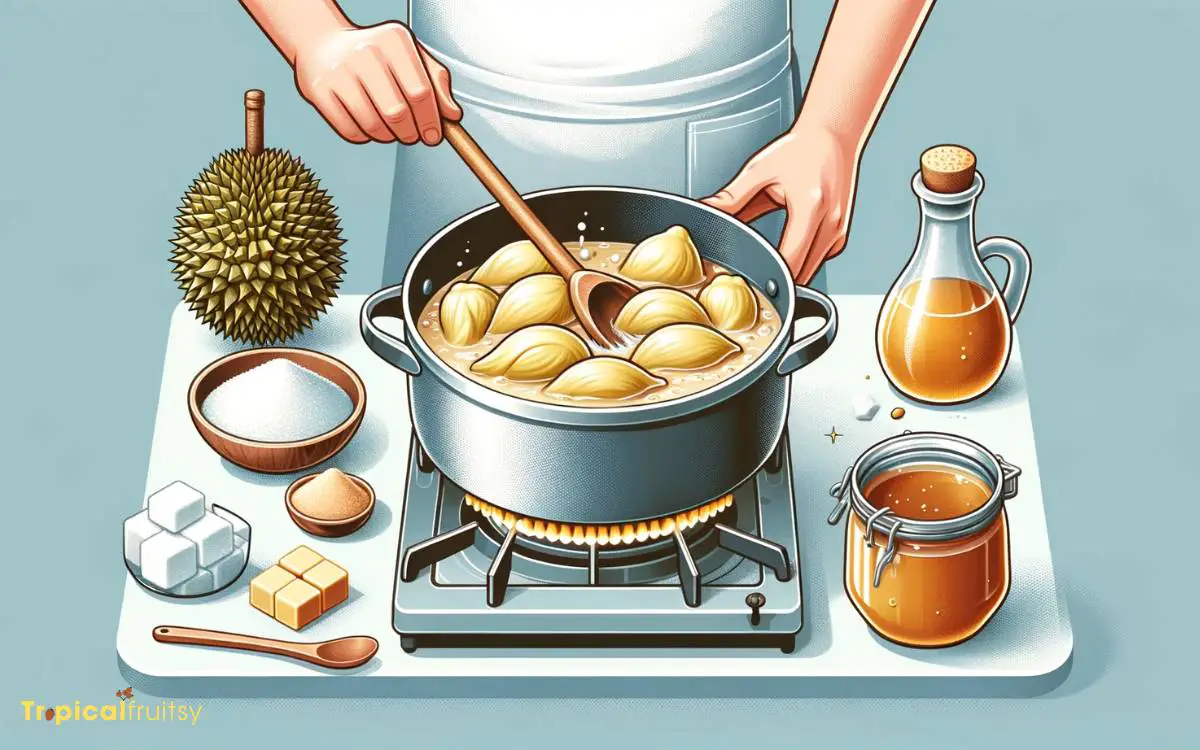
Transitioning from preparation to production, the durian pulp must now be combined with sugar and pectin in a heavy-bottomed saucepan to initiate the jam-making process.
The ratio of sugar to fruit is critical, as it not only sweetens but also helps preserve the jam. Pectin, a natural gelling agent, is paramount for achieving the desired consistency.
Methodically stir the mixture to ensure the sugar dissolves uniformly, preventing any granulation.
Applying steady heat is essential; a consistent simmer facilitates the pectin’s activation without degrading the fruit’s delicate flavor profile.
Innovative culinary techniques, such as the wrinkle test, can be employed to gauge the jam’s readiness.
This analytical approach ensures that the durian jam reaches an optimal balance of flavor and texture, aligning with the discerning palate of the enthusiast.
Step 4: Testing Jam Consistency
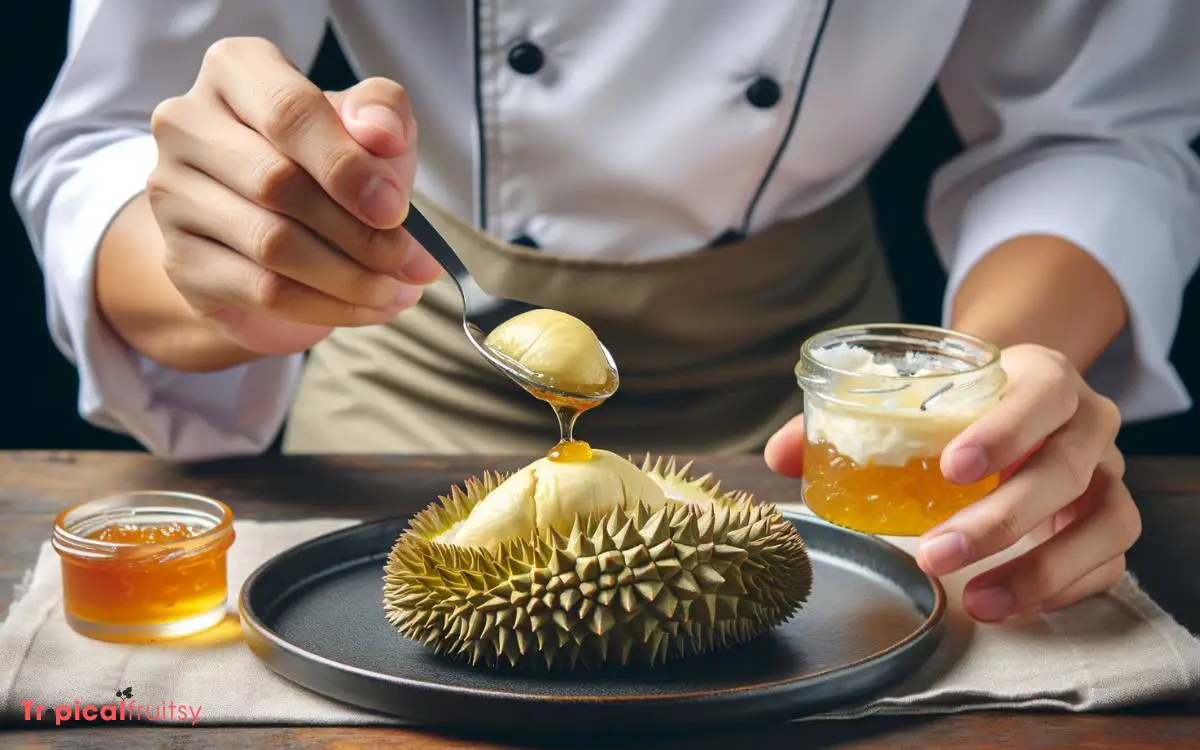
How can one accurately determine if the durian jam has reached its perfect consistency? This critical phase in jam-making requires a precise approach to ensure the texture is neither too runny nor overly firm.
The following methods provide a systematic evaluation:
- Refrigerator Test
- Place a small spoonful of jam on a chilled plate.
- After a few minutes in the refrigerator, observe if the jam wrinkles when pushed with a finger.
- Spoon or Sheet Test
- Lift a spoonful of jam and pour it back into the pot.
- Watch for the jam to fall in sheets or flakes, indicating the pectin has set.
Employing these tests requires a balance of patience and observation. Once the jam passes these consistency checks, the focus shifts to preparing for its preservation, specifically, sterilizing storage jars.
Step 5: Sterilizing Storage Jars
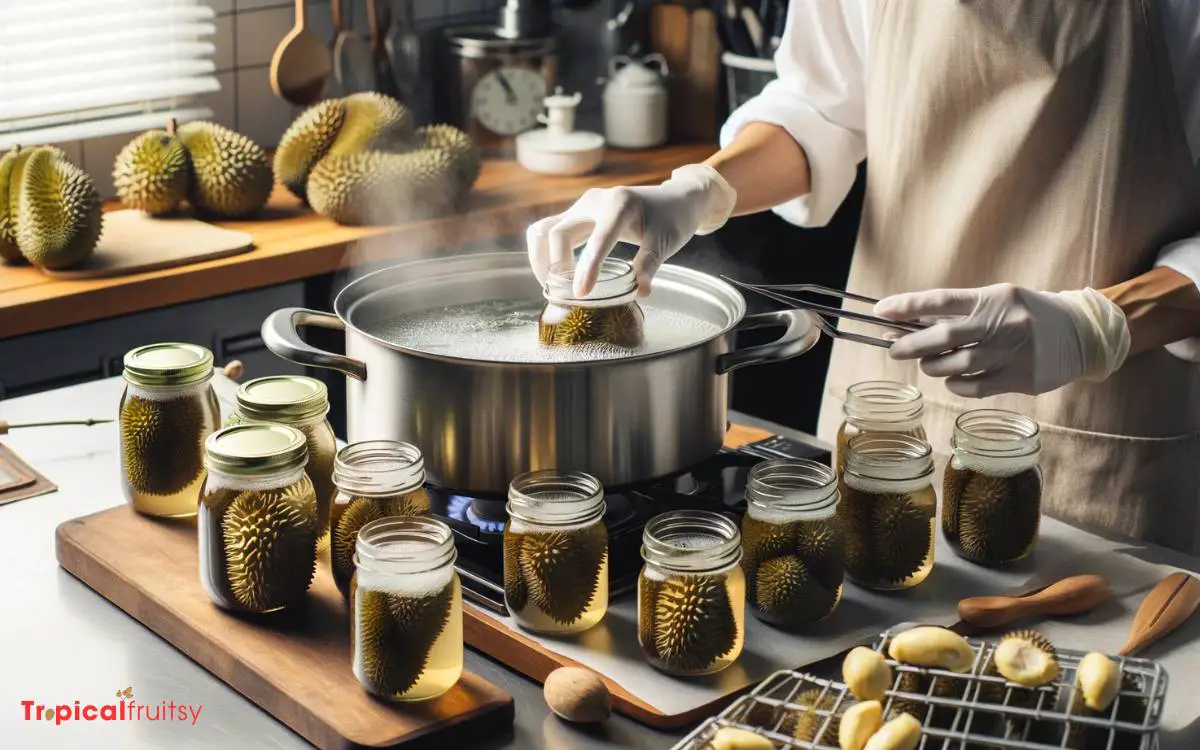
Prior to jam storage, it is essential to ensure that jars are sterilized to prevent microbial contamination and spoilage.
The boiling water method is a widely accepted procedure that involves submerging the jars in water and then heating them to a specified temperature for a certain duration.
Alternatively, the oven sterilization technique offers a dry heat option, while subsequent drying practices are crucial to avoid moisture, which could compromise the jam’s quality.
Boiling Water Method
Before filling them with the freshly made durian jam, ensure that your storage jars are properly sterilized using the boiling water method to prevent contamination.
The process is both methodical and precise, designed to eliminate any harmful bacteria that could spoil your jam.
Steps for Sterilization:
- Wash jars and lids thoroughly with soapy water.
- Submerge the jars and lids in boiling water for at least 10 minutes.
Considerations:
- Use tongs to handle the hot jars to avoid injury.
- Ensure jars are completely submerged to guarantee uniform sterilization.
By meticulously following these steps, you create a safe environment for the durian jam, enhancing its shelf life.
Oven Sterilization Technique
Transitioning from the boiling water method, the oven sterilization technique offers an alternative approach for preparing your jars to ensure the safe storage of durian jam.
This process involves heating the jars in an oven to kill any bacteria, yeasts, or molds that could spoil the jam.
It is a critical step in the canning process that requires precision and careful timing to ensure both the effectiveness of sterilization and the integrity of the jars.
| Step | Temperature | Duration |
|---|---|---|
| Preheat Oven | 225°F (107°C) | 20 min |
| Place Jars | Spread evenly on a tray | 20 min |
| Cool Down | Turn off oven | 10 min |
To execute this technique, preheat the oven to the specified temperature and arrange the jars without lids on a clean baking tray. Place the tray in the oven, ensuring the glass does not directly touch the heating elements.
After the required duration, allow the jars to cool gradually inside the oven. This methodical approach helps mitigate the risk of thermal shock to the glassware.
Jar Drying Practices
Once the sterilization process in the oven is complete, all jars must be thoroughly dried to prevent any moisture from compromising the quality of the durian jam.
Proper drying is critical, as residual moisture can be a breeding ground for microorganisms, potentially spoiling the jam.
Drying Techniques:
- Air-drying: Allow jars to dry on a clean towel in a well-ventilated area.
- Oven-drying: Return the jars to the oven, set at a low temperature, for a few minutes.
Best Practices:
- Inspect jars: Ensure no water droplets remain before filling.
- Handle with care: Use sterilized tools to avoid contamination.
This meticulous approach to drying ensures a pristine environment for the durian jam.
Step 6: Storing and Enjoying Jam
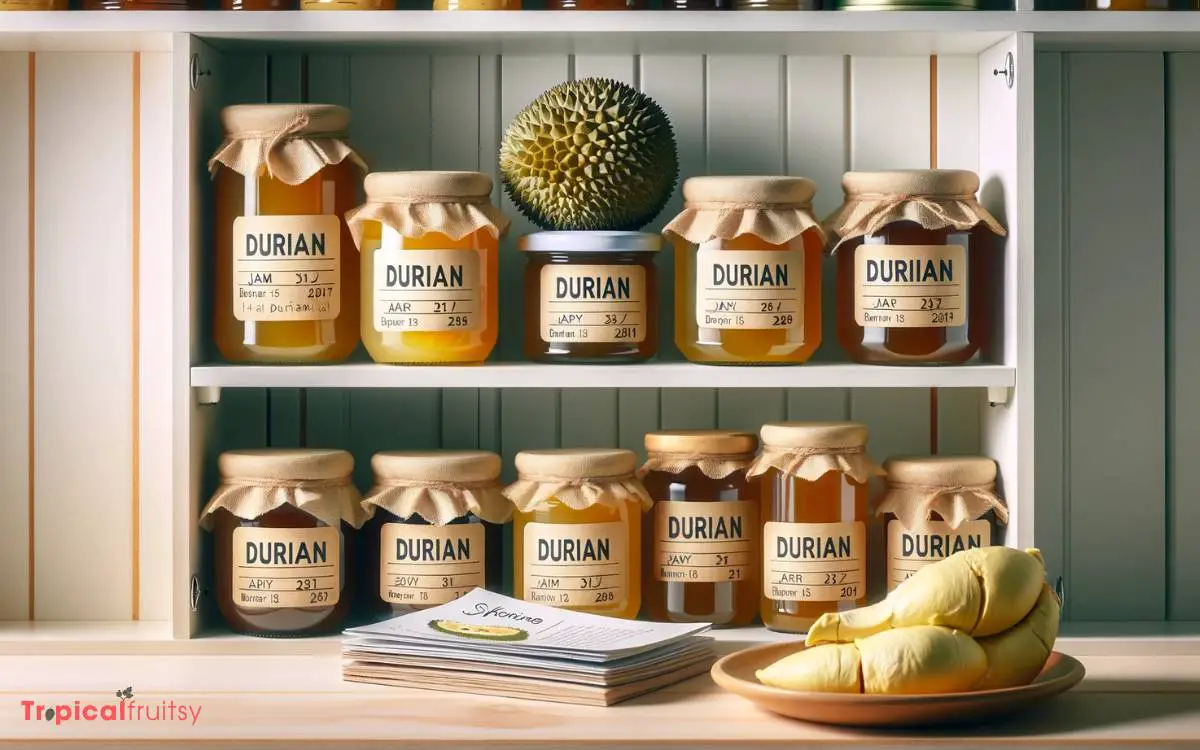
Proper storage is key to maintaining the freshness and flavor of homemade durian jam for an extended period. An analytical approach to jam preservation involves understanding the factors that contribute to spoilage.
Firstly, ensure the jam is stored in airtight containers to prevent oxidation, which can diminish its rich taste and aromatic profile.
Refrigeration is recommended to inhibit microbial growth, with the ideal temperature range being between 2°C and 4°C. Innovative vacuum-sealing techniques can further extend shelf life by removing air that harbors contaminants.
To enjoy durian jam at its best, consume within one month of opening, as this is when its sensory qualities are most pronounced.
Pairing with complementary foods that accentuate its unique flavor can also enhance the durian jam experience.
Conclusion
The meticulous process of creating durian jam intertwines the careful selection of ripe durians with the scientific precision of cooking and preservation.
As the pungent fruit is transformed into a sweet, spreadable delicacy, the contrast between its initial formidable aroma and the resultant aromatic confection becomes palpable.
This culinary alchemy not only preserves the fruit’s essence but also encapsulates the art of jam-making, ensuring the exotic flavors are preserved for future indulgence.
In a harmonious blend of tradition and innovation, durian jam embodies the essence of both the past and the present, offering a taste experience that is both familiar and unique.






